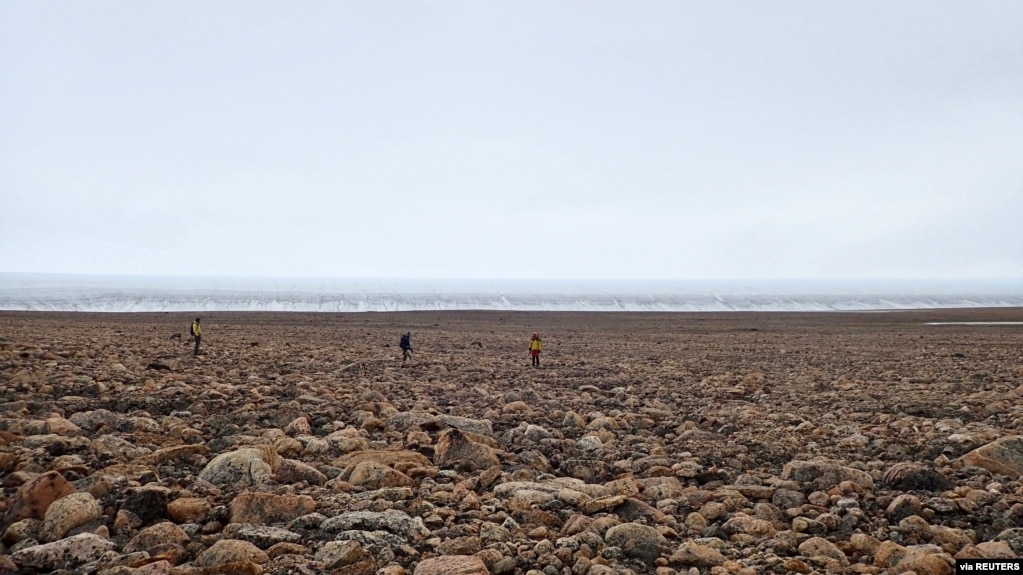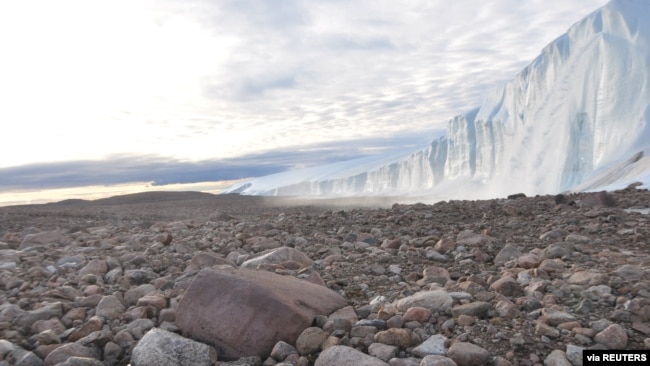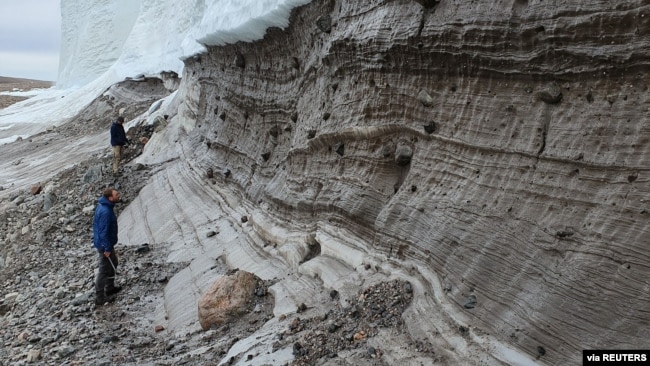
Scientists perform research field work at the edge of the Greenland Ice Sheet while studying the age of the 31-km-wide Hiawatha impact crater, buried under ice six-tenths of a mile (1 km) thick in 2019. (Shfaqat Abbas Khan/Handout via REUTERS)
Scientists say a huge crater formed by a meteorite strike in present-day Greenland is much older than first thought.
The 31-kilometer-wide crater was first discovered in 2015 under thick ice at Greenland’s Hiawatha Glacier. The ice covering the crater, called an ice sheet, is about one kilometer deep.
The crater remained hidden until it was identified by radar equipment and scientists decided to investigate.
At first, researchers estimated the massive hole might have formed about 2.6 million years ago, or even as recently as 13,000 years ago. But they announced March 9 that new dating methods suggested the crater is about 58 million years old.

The researchers said they based their findings on dating methods that measured the breakdown of radioactive material. Their results were recently released in a study in the publication Science Advances.
The new information suggests the strike happened about 8 million years after an asteroid hit an area in Mexico’s Yucatán Peninsula. That climate-changing event is blamed for causing the disappearance of more than 70 percent of Earth’s plant and animal life. All dinosaurs that were not bird-like disappeared.
At the time the meteorite hit Greenland, it was not the icy place it is today. It is believed to have been covered with rain forests populated with plant and animal life that followed the disappearance of most of the dinosaurs.
Researchers say the meteorite released millions of times more energy than an atomic bomb, leaving a crater big enough to swallow the city of Washington D.C.

Gavin Kenny is with Sweden’s Museum of Natural History and was the lead writer of the study. He told Reuters that forceful air from the event “would have knocked down most trees within tens to hundreds of kilometers.” In addition, an explosion from the strike would have set trees on fire and caused widespread forest fires.
Michael Storey, with Denmark’s Natural History Museum, was a co-writer of the study. He said the new information does not provide clear evidence that the impact had long-lasting effects on world climate. But, Storey added, he thinks such effects were “unlikely.”
Kenny noted that these kinds of strikes only happen every few million years. So, he said, “We don’t need to be very worried about such an impact happening anytime soon.”
I’m Bryan Lynn.
Reuters reported this story. Bryan Lynn adapted the report for VOA Learning English.
We want to hear from you. Write to us in the Comments section, and visit WWW.VOA-STORY.COM
_______________________________________________________________
Words in This Story
crater – n. a big hole in the ground
meteorite – n. a piece of rock from outer space that has fallen to Earth’s surface
glacier – n. a large mass of ice that moves very slowly, usually down a hill or valley
asteroid – n. a rocky object that goes around the sun like a planet
knock down – v. strike or hit something and cause it to fall to the ground
impact – n. the force or action of one object hitting another